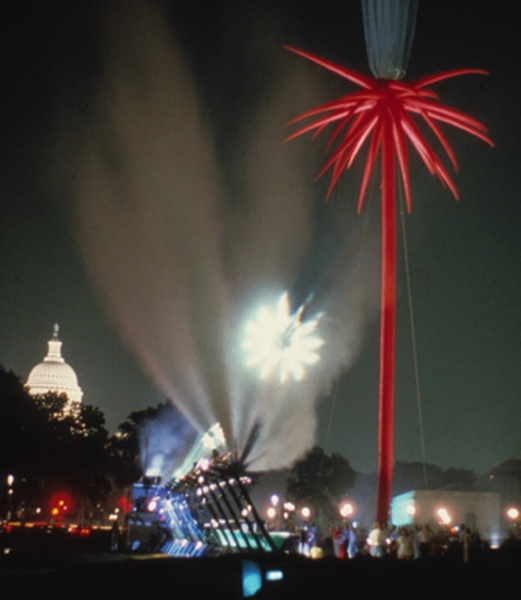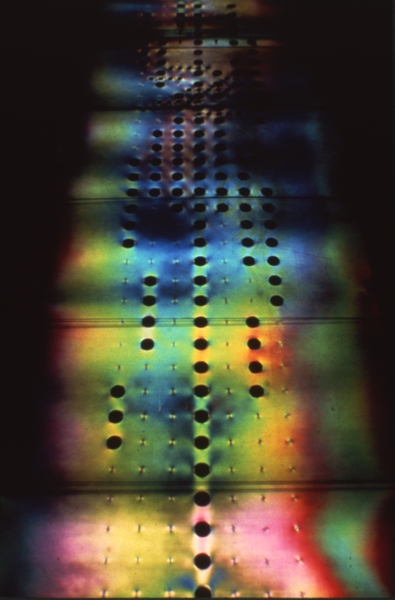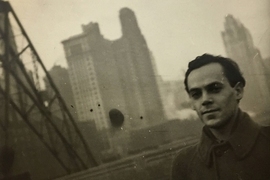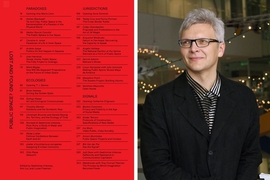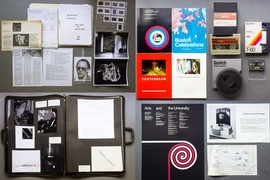In 1967, the newly established MIT Center for Advanced Visual Studies (CAVS), founded by professor György Kepes and conceived as a fellowship program for artists, welcomed its first three fellows. Pioneering work at the intersection of art, science, and technology quickly got underway, and in the following decades, more than 200 fellows arrived to participate in this globally influential program, along with researchers and graduate students.
Now, as part of a year-long celebration of the 50th anniversary of the founding of CAVS, a new interactive digital archive is offering public access to experimental work created by the fellows, including world-renowned artists such as Otto Piene, Aldo Tambellini, Yvonne Rainer, Nam June Paik, Muriel Cooper, and Stan VanDerBeek.
The digital archive was launched thanks to a grant from the National Endowment for the Arts to support the digitization and online presentation of the CAVS Special Collection, long held as slides and other original documentation at the Program for Art, Culture and Technology (ACT). ACT was formed in 2009 out of the merger of CAVS and MIT’s Visual Arts Program.
“Fifty years ago, the founding of CAVS showed remarkable conviction and foresight,” says former ACT director and Associate Professor Gediminas Urbonas. “But what is even more remarkable is how the work and ideas that the CAVS fellows’ initiative produced are still relevant to our present world. We are living in the future that they imagined. And that work can help us address many of the crises that have and will emerge.”
The landing page of the site introduces users to an experimental, randomized three-dimensional environment of collection materials, which can be clicked through to view metadata (such as dates, locations, and descriptions) for each item. This feature allows users to experience a serendipitous visualization of the collection, encountering new materials at every turn. The design was inspired by the work of Muriel Cooper, a CAVS fellow, founding faculty member of the MIT Media Lab, and the first design director of the MIT Press.
Users can explore the collection by artist, subject (from environmental sound to sky art), or format (whether installations, drawings, booklets, photographs, videos, etc.). Topic tags show how materials are connected. The site provides more than 200 profiles of artist-fellows and alumni from CAVS; a timeline of the affiliations of fellows, visiting artists, and graduate students; and an interactive world map that illustrates the diverse global origins of the fellows.
Designed for both artists and academics, the site will grow to include research resources that document the process of creating art, such as proposals, administrative records, and correspondence. Posters, academic course booklets from the Master of Science in Visual Studies (SMVisS) degree program (now the Master of Science in Art, Culture, and Technology), and publications from exhibitions are now accessible. As the project continues, thousands of additional images, documents, and video files will be added.
Leadership for the project came from Urbonas, with project management by ACT archivist Jeremy Grubman. The MIT Libraries provided cataloging support, and the MIT Museum contributed materials from their CAVS-related holdings. The site was designed by NODE, a Berlin- and Oslo-based design studio, with development work by Bengler, an Oslo-based firm.
One component of the site makes it unique among visual art repositories: the ability for artists to annotate their works, sharing their inspirations and the process behind creating art. ACT has posted several sample annotations and will invite CAVS fellows more broadly to participate.
In one of the sample annotations, CAVS fellow Jon Goldman SMVisS '84 writes of his “nudibranch” sculptures: “I created nudibranch, a forty-foot cold-air inflatable sculpture ... to call attention to the most delicate of creatures as telltales for the health of their ecosystem. The bleaching of coral ecosystems worldwide was becoming a reality and I looked to these incredibly beautiful creatures as source models to become kinetic sculptures activated by the wind.”
Ellen Sebring SMVisS '86, another CAVS fellow, annotated a catalog of video art titled “Centervideo”: “The generation of video artists that I worked with at CAVS were across-the-board phenomenal. They had mountains of energy, openness, and the confidence, with the advent of portable cameras, to cast personal video as the interface between themselves and the world ... You can’t imagine the sudden freedom of the moving image being accessible.”
In addition to launching the digital archive, ACT is celebrating the CAVS50 anniversary by developing exhibitions, events, an international symposium, and a publication, all intended to explore ideas that emerged from CAVS — art and the environment, art at the civic scale, and art as it relates to the future — in a contemporary context.


